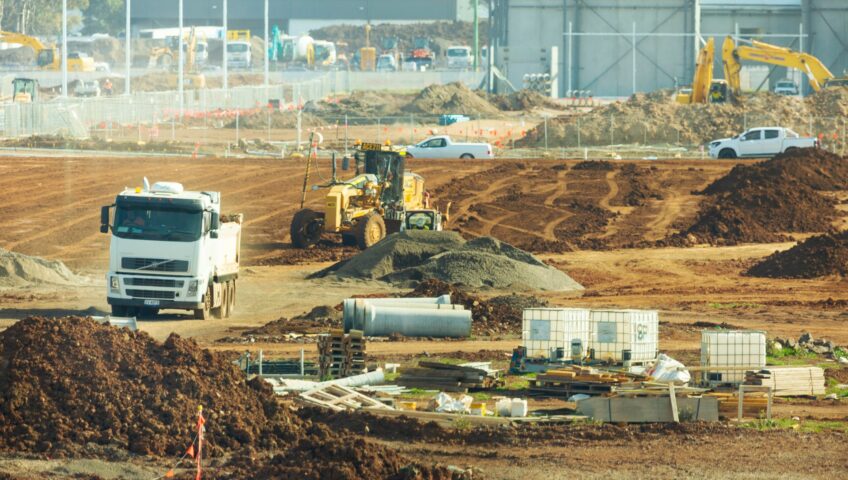Civil construction projects in Hope, BC, often present unique challenges and opportunities, requiring careful planning, attention to detail, and solid execution. With its breathtaking landscapes and growing population, Hope offers an exciting environment for developing infrastructure that meets the needs of the community while remaining sensitive to the natural beauty of the region. As a full-service landscaping and construction company focusing on eco-friendly practices in the Lower Mainland of British Columbia, New Wave Earth Works is well-versed in managing civil construction projects in this unique locale.
We present an essential checklist to guide you through the key aspects of planning and executing a successful civil construction project in Hope, BC. Topics covered include project management, site assessment, permits and regulations, risk mitigation, safety measures, sustainability, and local engagement. Whether you’re new to the world of civil construction or an experienced professional, this checklist will provide valuable insights to ensure your project’s success.
1. Effective Project Management
The success of a civil construction project in Hope, BC, depends heavily on effective project management. A well-structured project management approach allows for smooth collaboration between stakeholders, efficient use of resources, and timely completion of the project. Key elements to consider in effective project management include:
– Establishing clear objectives and scope for the project, ensuring all team members are aligned with the project’s goals.
– Implementing a detailed project plan, including schedules, budgets, and resource allocation, to keep the project on track and avoid costly delays.
– Accurately monitoring and reporting project progress to ensure transparency among stakeholders and enable timely adjustments to any unexpected challenges.
2. Comprehensive Site Assessment
Before breaking ground on any civil construction project, a thorough site assessment is crucial. This involves evaluating the land, surrounding environment, and existing infrastructure to gain an in-depth understanding of the site’s unique conditions and constraints. A comprehensive site assessment ensures potential issues can be addressed before they escalate, allowing for a smoother construction process. Key elements to consider in site assessment include:
– Topographical surveys to map the contours, elevations, and slopes of the site, providing critical information for design and construction.
– Geotechnical investigations to evaluate soil conditions, groundwater levels, and potential hazards, such as erosion or landslides.
– Environmental assessments to identify any sensitive habitats, wildlife, or ecological features that need to be taken into account during project planning and construction.
3. Permits and Regulations
Achieving regulatory compliance is essential for any successful civil construction project in Hope, BC. Navigating the complex web of permits, approvals, and regulations can be time-consuming and challenging, but failing to meet these requirements can lead to costly delays or even project termination. Important steps in achieving regulatory compliance include:
– Identifying relevant permits and approval processes required for your project by consulting with local authorities, such as the District of Hope and the British Columbia Ministry of Transportation and Infrastructure.
– Engaging with regulatory agencies early in the planning process to ensure that project designs and plans comply with applicable laws and guidelines.
– Allowing adequate time for submitting permit applications, addressing feedback, and obtaining approvals, as these processes can often take longer than initially expected.
4. Risk Mitigation and Safety Measures
Civil construction projects come with inherent risks, making risk mitigation and safety measures essential components of project planning and execution. By anticipating potential hazards and implementing appropriate strategies to mitigate them, project leaders can significantly reduce the likelihood of accidents and disruptions. Key considerations for risk mitigation and safety include:
– Conducting regular risk assessments throughout the project timeline to identify and address potential hazards or challenges.
– Developing and enforcing a comprehensive safety program that includes training, personal protective equipment, and job site inspections to maintain a safe work environment for all personnel.
– Implementing contingency plans to effectively respond to unforeseen events or emergencies that could impact the project’s timeline, budget, or overall success.
5. Sustainability and Environmental Stewardship
As a responsible civil construction company, New Wave Earth Works places great emphasis on sustainability and environmental stewardship throughout the entire project lifecycle. Ensuring that your civil construction project in Hope, BC, adheres to sustainable practices and minimizes its environmental impact is essential for a successful outcome. Here are a few core principles to uphold ecological integrity within your project:
– Incorporating environmentally friendly materials and technologies, such as renewable energy sources, waste reduction measures, and water conservation strategies, into your project’s design and infrastructure.
– Ensuring that construction activities minimize harm to local ecosystems, habitats, and water resources by implementing erosion control and sediment retention measures, as well as following best practices for construction near sensitive areas.
– Emphasizing the importance of restoring and enhancing natural landscapes after construction, using native plants and natural landscaping techniques to support local biodiversity and strengthen ecological resilience.
6. Community Engagement and Communication
Civil construction projects in Hope, BC, often impact the broader community, so it’s crucial to maintain open communication and engage local stakeholders throughout the project’s lifecycle. Inclusive community engagement can foster a sense of ownership and support for the project, while clear communication can prevent misunderstandings or misinformation. Tips for successful community engagement and communication include:
– Organizing public consultations and information sessions to inform local residents about the project’s objectives, plans, and timeline, as well as solicit valuable feedback and address any concerns.
– Establishing a dedicated communication channel, such as a hotline or email account, to address questions and provide project updates to interested parties.
– Collaborating with local organizations, businesses, and service providers to maximize the project’s benefits for the Hope community and ensure a lasting positive legacy beyond its completion.
Achieving Civil Construction Success with New Wave Earth Works
A successful civil construction project in Hope, BC, relies on effective project management, comprehensive site assessment, compliance with permits and regulations, risk mitigation and safety measures, sustainability and environmental stewardship, and meaningful community engagement. By incorporating these essential elements into your project planning and execution, you can navigate the unique challenges and opportunities that Hope presents and deliver exceptional outcomes for the community.
New Wave Earth Works is committed to providing exceptional, eco-friendly civil construction services in the Lower Mainland of British Columbia. Our experienced team is well-versed in handling civil construction projects that prioritize environmental sustainability, community impact, and overall success.
Contact us today to discuss your next civil construction project in Hope, BC, and let’s work together to build a brighter, greener future for our communities.


